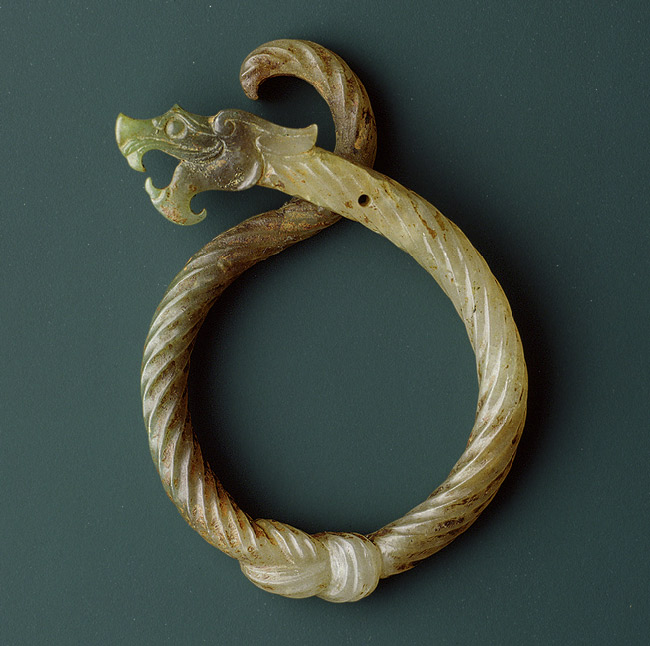D_Glenn wrote:There's nothing in Liu Da's book.
.
No? Not even Hua Tuo's five aninals are mentioned? I have a hard time to believe that I mixed it up with some other book.... But I'll have to have a look at it then...
D_Glenn wrote:There's nothing in Liu Da's book.
.
Bao wrote:D_Glenn wrote:There's nothing in Liu Da's book.
.
No? Not even Hua Tuo's five aninals are mentioned? I have a hard time to believe that I mixed it up with some other book.... But I'll have to have a look at it then...

D_Glenn wrote:Yeah. They're "mentioned". He mentions a few things but fails to actually describe anything.


D_Glenn wrote:I thought you recommended the book because he mentions Daoist Jogging?
But that practice evolved into various Circle Walking practices because you could do it in a room without anyone being able to watch.
.
So stage 1 is acquiring post-heaven qi through standing, sitting or lying down practices; but stage 2 is done by using Xing Zhuang (Moving Rooted/Meditative/Grounded) to acquire pre-heaven vitality/ elixir. But in our YSB lineage this is why we do Circle Walking everyday and ideally Standing.
... you should “let your body do some of the work by itself, learn how your body wants to move without forcing it.” There are many good reasons to why you need to learn how to listen on your body, and slow form practice is an excellent tool for this purpose.
.....
I found a great quote in this blog[link in the post]:
“When we learn to love our bodies for exactly as they are, we learn to cherish and adore them, listen to them, give them what they need and move them how they wish to be moved.”
It says a lot about what great Tai Chi practice is all about. And it says a lot about natural movements. Or at least it’s a key to access your natural movements and to start developing your Prenatal Qi.
.....
[when practicing]Just feel your body. First examine your body as it moves, be sure that you are comfortable and move relaxed. Now amongst things, you should try to feel:
what the transmission of balance and weight do to your arms.
how the gravity affects your movements.
how your breath affects your movements
and how chest and spine movements affect the rest of the body.
You should try to have a rounded and quite strict alignment when practicing form and drills. Try to not move an arm by itself, but let the movements of weight transmission and open/close movements (=of the chest) control your arm movement.
----
Bao wrote:D_Glenn wrote:I thought you recommended the book because he mentions Daoist Jogging?
But that practice evolved into various Circle Walking practices because you could do it in a room without anyone being able to watch.
.
Jogging, sitting, walking, sleeping... yes. I don't remember any good names of them. And you can do this practice anywhere, with or without people watching. It's about something that goes into your daily life, a practice that is never forced but becomes second nature.


D_Glenn wrote:Have you even read the book that you are recommending people to buy?
....
You should really do a **** ton of more research before you try to write as any sort of authority on these topics.
 A little bit odd when I think about it, when you read pages and pages on terminology and semantics, and hardly never ever see anything close to a practical advice. All too common in the world of IMA.
A little bit odd when I think about it, when you read pages and pages on terminology and semantics, and hardly never ever see anything close to a practical advice. All too common in the world of IMA. 
Bao wrote:D_Glenn wrote:Have you even read the book that you are recommending people to buy?
....
You should really do a **** ton of more research before you try to write as any sort of authority on these topics.
As I said, I might mix it up with other books. And no, I am not an authority on books and on how Da Liu writes. To be frank, I don't care very much about names , terminology and the intellectual stuff. Here, in this corner, it's all about practical practice, how to really practice what's in the theory. And this is something the "authorities" on names and terminology almost never speak about, i.e. practical practice.A little bit odd when I think about it, when you read pages and pages on terminology and semantics, and hardly never ever see anything close to a practical advice. All too common in the world of IMA.
Bao wrote:Deadmonki wrote:Bao wrote:Neidan practice is mostly about movement. Sitting meditation came later...
Bao,
I'm interested to hear more of your thoughts on this, if you have time.
Best,
There's a lot about this. No, no time for the moment, I'll have to think about this.
But if you are interested, you could pick up Liu Da's book on Chinese Health practice, "Taoist Health Exercise Book". There's some interesting and very basic nei dan practice here that could interest you.
http://www.amazon.com/Taoist-Health-Exe ... 042&sr=1-5





Users browsing this forum: No registered users and 222 guests